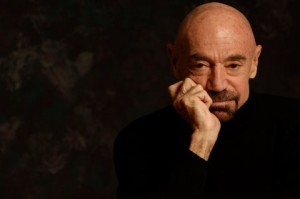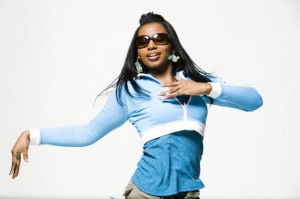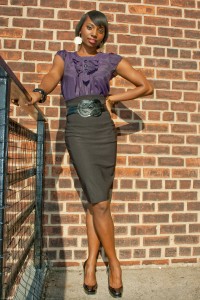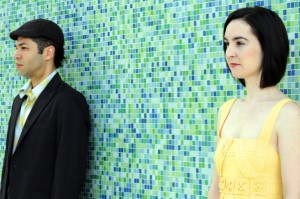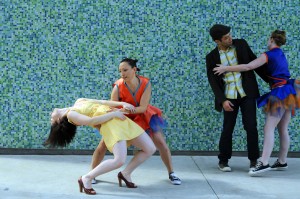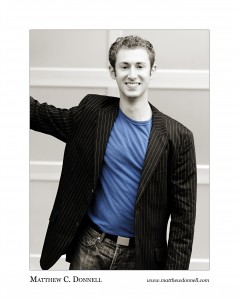Today’s “10 Questions With…” features Gelsey Kirkland & Michael Chernov; the Artistic Directors of the Gelsey Kirkland Academy of Classical Ballet. The two of them were kind enough to take some time to talk about the school here with us and expound on some of the highlights…
1. What were the events that transpired leading to the creation of the Gelsey Kirkland Academy of Classical Ballet?
We believe that dancers should be actors first and foremost. We created GKACB to provide comprehensive classical ballet training with the goal of developing well-rounded artists. Our approach to training is unique in that the curriculum we offer is not available anywhere else in this country.
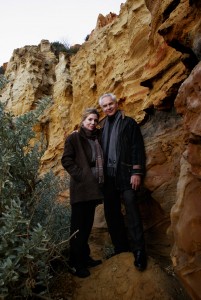
2. What does each Artistic Director bring to this project?
Gelsey brings a ballet background with some theatre; Misha brings a theatre background with some ballet. Gelsey brings detail; Misha brings ideas and broad strokes. Our shared vision is to merge our backgrounds, knowledge and strengths to enhance the training our students receive and to give direction to the studio company.
3. You advocate a return to the story ballet. Can you explain a bit about how you will be working toward this ideal?
We believe that the future of ballet lies in dramatic storytelling. Stories help people to understand themselves and life. To work towards this, we will offer residencies to emerging choreographers, dance companies, designers and musicians, providing them with space to create new works in a collaborative environment. Our plan is to draw on in-house workshops to develop new, innovative dramatic ballets. At the same time, we will build a repertoire of traditional, classical works.
4. What will the training at the Academy be like-and how will it prepare and inspire students?
We take a specialized, multidisciplinary approach to training our students. At the base of our training is core dynamics, which includes dynamic alignment exercises, Pilates reformer and practical anatomy classes. This foundation work is built into the curriculum on a daily basis. Our ballet training includes daily technique classes, which draw from the Russian, Danish, and French traditions, with an overall kinesthetic approach. Classical character, historical dance, pantomime, acting, history, music, and critical analysis make up the remainder of the training.
Dramatic development is a key element of our training program. Students will learn how to build a character through physical and psychological gesture and how to communicate with the audience using the Michael Chekhov technique, as well as learning the art of pantomime and period movement.
5. Can you talk a bit about the Studio Company?
Our hope is to develop an ensemble studio company capable of realizing diverse and compelling theatrical ideas. We will build repertoire based on established classical works and new works by collaborating and bringing together actors, mimes, directors, dancers, musicians, choreographers, and production designers. We are building on established ideas; there have been many times in history that people have tried to achieve a synthesis of many disciplines to create a single work of art. We believe that only a small organization these days may be able to achieve this due to restrictions of unions, budgets, and critical expectations. The ability to experiment in large companies is very limited due to economic restrictions.
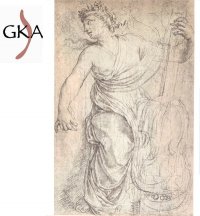 6. Your “Teacher Training” program appears to offer a unique synthesis of traditional methods and techniques. Can you share with readers some of the basic principles and why you chose them?
6. Your “Teacher Training” program appears to offer a unique synthesis of traditional methods and techniques. Can you share with readers some of the basic principles and why you chose them?
Our teacher training program will provide a systematic approach to teaching ballet: focusing on what to teach, how to teach, when to teach and for how long at any given level. It includes hands-on training by masters in the field of ballet pedagogy. The methods and techniques we have chosen reflect our desire to develop and train the dancer from the inside out and to provide them with the tools they need to develop into well-rounded artists. Teachers in training learn how to construct lessons that develop kinesthetic awareness, coordination, strength and flexibility. This goes hand in hand with the training that our students receive. Music training and understanding of musicality, time signatures and rhythms are integral parts of the training for teachers. Graduates will be recognized as certified teachers in the syllabus in the Gelsey Kirkland Academy of Classical Ballet.
7. You will be offering a summer intensive. Can you tell us a little about that?
Our summer intensive is a rigorous program (three weeks’ duration) that incorporates key elements of our year-round program. We have truly great teachers for our inaugural summer intensive. Our faculty includes master teachers David Howard, Nina Osipyan, Irina Kolpakova and Vlad Semenov; men’s class, variations and pas de deux teacher, Mikhail Ilyin; mime teacher, Pilar Garcia; Bournonville specialist, Karina Elver; character teachers, Larisa Calero and Nadejda Loujine; drama teacher, Lenard Petit; and nutrition/wellness specialist and physical therapist, Suzette Madson.
8. As you launch this endeavor, what do you most want the dance community to understand about GKACB?
Our vision is about fostering creativity. It isn’t simply about image-making; the emphasis is on the spirit, not the shape. The focus is on finding the creative spirit, wedding form and content.
9. How have you gone about the process of selecting your faculty?
We have brought together people who have a common vision. These teachers are specialists in their respective areas, and even though some are teaching different disciplines, their approach is in line with our vision for GKACB.
10. Are there any opportunities for sponsorship?
Absolutely, we accept monetary donations, as well as donations in kind (all tax-deductible). We welcome corporate sponsorship, as well as sponsorship for projects by individuals.
Bio: GELSEY KIRKLAND
Gelsey Kirkland received her early training at the School of American Ballet, gaining early stage experience dancing children’s roles in Balanchine’s The Nutcracker, A Midsummer Night’s Dream and Harlequinade. She graduated to the New York City Ballet in 1968, was promoted to soloist in 1970 and principal dancer in 1972. While in the New York City Ballet she performed a variety of leading roles in their repertory, including Concerto Barocco, The Cage, Irish Fantasy, Symphony in C, La Source, Theme and Variations, Tarantella, Harlequinade, The Nutcracker and Dances at a Gathering.
Her desire to master roles in full-length works coincided with Baryshnikov’s defection and invitation to dance with him at American Ballet Theatre, which she joined in 1974 as principal dancer. Teachers most influential in her development as a classical artist include Stanley Williams, Maggie Black, David Howard, actress and mime Pilar Garcia and dramaturge Greg Lawrence.
Miss Kirkland received worldwide acclaim for her performances in the classical repertory: the title role in Giselle, Kitri in Don Quixote, Clara in The Nutcracker, Swanhilda in Coppélia, Aurora in The Sleeping Beauty, Juliet in Romeo and Juliet, the sylph in La Sylphide, Lise in La Fille Mal Gardée, Odette/Odile in Swan Lake, Nikiya in The Kingdom of the Shades, the Mazurka and pas de deux in Les Sylphides, and the sleepwalker in La Sonnambula.
Major choreographers have been inspired to create new works for her; namely, a production of Firebird by George Balanchine when she was seventeen, several ballets by Jerome Robbins, and Antony Tudor’s The Leaves are Fading and The Tiller in the Fields.
Miss Kirkland’s guest appearances with leading companies are notably the critically acclaimed performances of The Sleeping Beauty and MacMillan’s Romeo and Juliet with The Royal Ballet at Covent Garden, and in Cranko’s Romeo and Juliet with The Stuttgart Ballet. On the occasion of Queen Elizabeth’s 60th Birthday Gala at Covent Garden she performed the balcony pas de deux with Anthony Dowell.
Her appearances on American and British television include Live from Lincoln Center and the film version of Baryshnikov’s The Nutcracker.
Published works by Miss Kirkland include three books co-written with Greg Lawrence: “Dancing on My Grave” (1986), a best selling autobiography published in 5 languages,
“The Shape of Love” (1990), contracted and published as a book on dance education, and a children’s book titled “The Little Ballerina and her Dancing Horse” (1993).
Miss Kirkland has been honored at the White House by First Lady Nancy Reagan, and has been the recipient of awards that include the Victory of the Spirit Award at the Kennedy Center and the Gerald Manley Hopkins Theatre
Award. She was appointed to the Board of Directors for Sight Savers International, named National Chairwoman for USA International Ballet Competition, Jackson, Mississippi, and was an honored alumnus at the 50th Anniversary Gala for American Ballet Theatre at the Metropolitan Opera House.
Retirement from the stage in 1986 marked Miss Kirkland’s transition into teaching and coaching in institutions such as American Ballet Theatre, The Royal Ballet School, English National Ballet, and The Australian Ballet. In the 1990’s she was Professor of Dance at Adelphi University in New York. In 2002-5 she taught at the Victorian College of the Arts and was director of the ballet program at Danceworld 301.
In 2006-8 she collaborated with Kevin McKenzie and Michael Chernov in the staging and additional choreography for The Sleeping Beauty for American Ballet Theatre, as well as appearing as the Fairy Carabosse in that production.
Currently, Miss Kirkland teaches at the Metropolitan Opera, Steps on Broadway and privately.
Bio: MICHAEL CHERNOV
Michael Chernov received his early ballet and theatre training at the National Ballet and Theatre School in Melbourne, Australia. In the 1970-80’s he worked with the Sydney City Ballet and Sydney Festival Ballet in Australia and toured with Alexander Goudonov and Eva Evdokimova and The Israel Classical Ballet at the Athens Festival.
In 1995 Mr. Chernov choreographed The Nutcracker for the Philippines Ballet Theatre and in 1995-96 taught dance for Adelphi University where he choreographed Spring Sonata and Polish Suite.
In 2003 Mr. Chernov received his Graduate Ballet Teacher’s Diploma (Vaganova Method) at the Victorian College of the Arts, and in 2006 completed a Master of Arts Administration at the University RMIT, Melbourne Australia.
He taught classical ballet at the Victorian College of the Arts in 2004 and 2005, and at Danceworld in Melbourne, Australia where he was co-director of the ballet program together with his wife Gelsey Kirkland.
He has taught at Steps on Broadway, Peridance Studios and Ballet Hispanico in New York and in summer programs throughout the U.S.
From 2006-7 Mr. Chernov worked in collaboration with Gelsey Kirkland and Kevin McKenzie on the staging and choreography for The Sleeping Beauty at American Ballet Theatre. The Sleeping Beauty played at the Metropolitan Opera House, New York in 2007 and 2008 and also toured the USA. It is due to be performed again at the Met in June 2010.
From 1987 to 1994 Mr. Chernov worked as an actor performing Off–Broadway and in regional theatre with the Hartford Stage Company, Connecticut, and the Alonso Theatre Company, Florida in plays by Sophocles, Shakespeare, Shaw and Coward, working under the direction of Tony Award winning directors Vivian Matalon and Brian Murray.
In 1992 he studied theatre directing at T. Schreiber Studios in New York and has directed plays by Anton Chekov and Horton Foote, including directing the actor Leonid Satinovsky from Russia’s prestigious Moscow Arts Theatre in Chekov’s The Bear.






